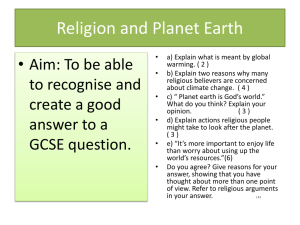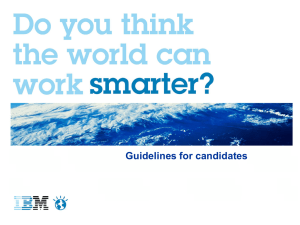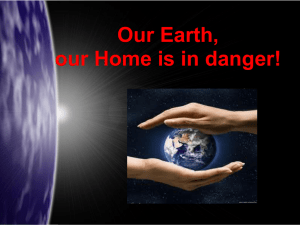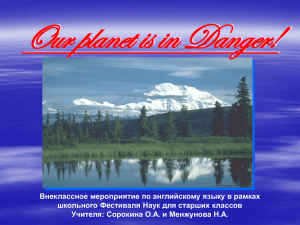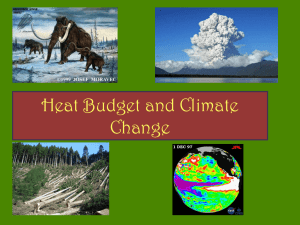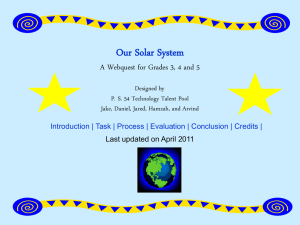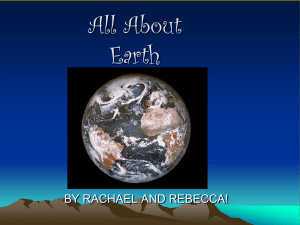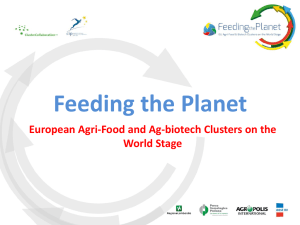Presentation title can go here
advertisement
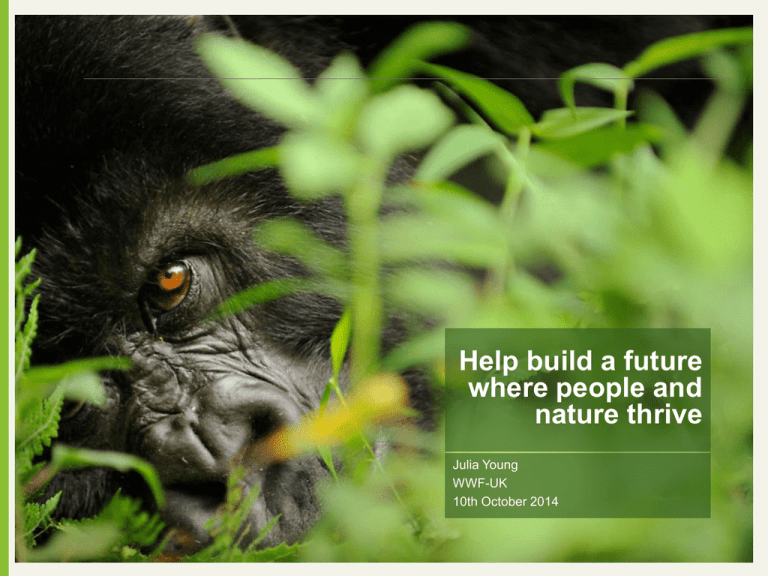
Help build a future where people and nature thrive Julia Young WWF-UK 10th October 2014 One planet. The only one we have. We currently use natural resources as if we had 1.5 planets. We’ll need more than 2 planets by 2030 if we carry on as we are. Living Planet Report 2014 The Living Planet Report 2014 • Living Planet Index (LPI) – 52% decline since 1970 • Ecological Footprint (EF) – alarming 50% overshoot • Poorest countries bearing the brunt • Better choices – “Business as usual” will not stop the decline. The world’s population is set to grow from 7 billion today… …to more than 9 billion by 2050. Per capita income is set to rise by 290%... …leading to increased consumption. A planet under pressure Over the next 40 years, we’ll need to produce as much food as we’ve done in the last 8,000 years of agriculture. A planet under pressure By 2025, at least 3.5 billion people will live in water-stressed river basins. Living Planet Report 2014 Panning-out: nature and society The Oxfam Doughnut – A safe and just operating space for humanity Source: Raworth, 2012 A planet under pressure Demand for wood for timber, paper and fuel is expected to triple by 2050. Living Planet Report 2014 Panning-out: forest cover Forest area in 2000 and projected forest area in 2050 2000 2050 Source: WWF, 2011b Living Planet Report 2014 Environmental changes affect us all • Human well-being depends on natural resources such as water, arable land, fish and wood; and ecosystem services such as pollination, nutrient cycling and erosion control. • Putting ecosystems at the centre of planning and managing activities that depend on natural resources brings economic and social benefits. • While the world’s poorest continue to be most vulnerable, the interconnected issues of food, water and energy security affect us all. • For the first time in history, the majority of the world’s population lives in cities, with urbanization growing fastest in the developing world. © Naturepl.com / Andy Rouse / WWF-Canon What can be done? Living Planet Report 2014 WWF’s One Planet Perspective Source: WWF, 2012 Living Planet Report 2014 How do you play your part? Living within the planet’s means is possible Two themes most individuals and businesses can easily help with: Preserve natural capital. Consume more wisely. Individuals, communities, businesses, cities and governments are making better choices to protect natural capital and reduce their footprint, with environmental, social and economic benefits Changing our course and finding alternative pathways will not be easy. But it can be done. But where to start? • POLICY – what do you want to say about your business approach to sustainable and ethical sourcing? • IMPLEMENTATION – identify some main priorities, especially if you have any risks, then progressively take manageable steps to improve • MONITORING & AUDITING – check your progress and how you feel you are delivering as a business, get help where you need it • TRANSPARENCY – be honest about your work in this area, but share it with others both to help you keep improving, and to get positive reinforcement for your actions Case: timber and paper • UNDERSTAND THE LAW: EUROPEAN TIMBER REGULATION • GUIDANCE – FREELY AVAILABLE: http://shop.bsigroup.com • Work with your suppliers to understand details, and potential risks or opportunities • Look for credentials DIFFERENTIATION How do we motivate forest management to the highest possible environmental and social standards? Forest certification is an important tool to improve practices, via a market driven mechanism Differentiated your business on sustainable and ethical performance, as well as your products and those you plan to buy Footprint - consumption

